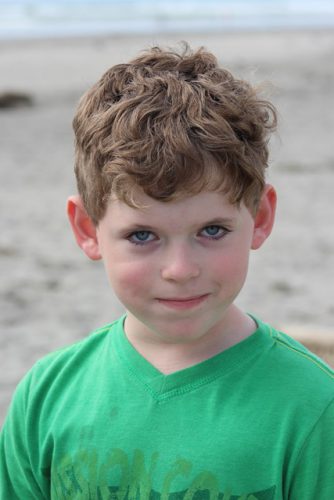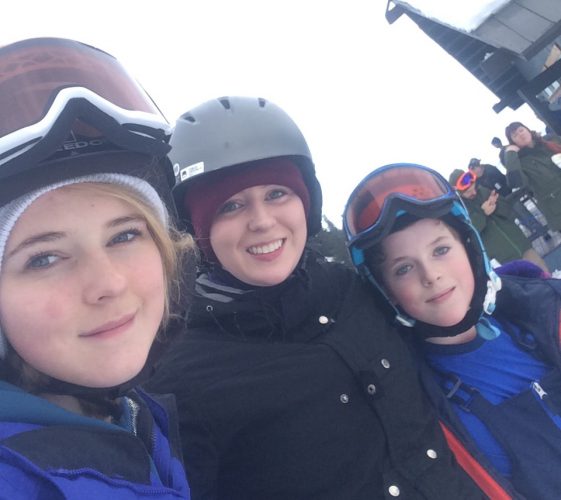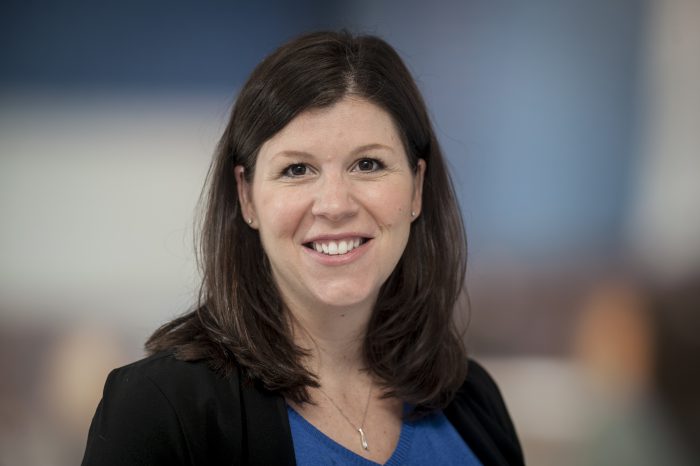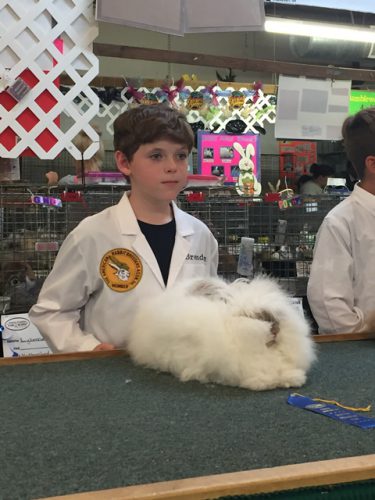
Some say ‘it takes a village to raise a child.’ At Seattle Children’s Autism Center, this concept came to life to a certain degree through the development of a collaborative method for diagnosing autism in children that aimed to improve the diagnostic process and increase efficiency, with the potential of leading to better patient outcomes.
Linda Bittinger’s 9-year-old son Brendan found his ‘village’ at the Autism Center in June 2017 when a team made up of providers from different disciplines came together for a thoughtful diagnostic evaluation that would shape his treatment path to progress.
“When we received his diagnosis, I felt a sense of optimism,” said Bittinger. “I had less worries knowing there were opportunities for treatment. And since then, he’s made tremendous strides.”
Facing struggles and finding help
Bittinger didn’t notice any immediate signs of concern in her baby son Brendan, even after experiencing a difficult pregnancy and his premature birth.
It wasn’t until Brendan was around 3 years old that his behavioral differences took shape.
“He was extremely shy and didn’t want to interact with people, not even family members at times,” said Bittinger. “Brendan couldn’t make eye contact; he would just hide.”
Going into preschool, the difficulties became even more apparent for Brendan as he couldn’t handle the unpredictable nature of the setting.
“He seemed very rigid and depended significantly on having a routine,” said Bittinger. “By that age, you could tell there was something he was really struggling with.”
Starting elementary school wasn’t any different, as problems continued to intensify both in the classroom and on the playground.
“Brendan began to get bullied because he would stand in the very same place at recess everyday,” said Bittinger. “It just wasn’t possible for him to participate in regular activities like the other kids did.”
Having recognized the issue with much concern, the school and Bittinger worked together to get Brendan the help he needed.
On the path to a diagnosis

In March 2016, Bittinger took Brendan to be seen by his pediatrician. It was there that she would hear that her son might have autism spectrum disorder (ASD), as well as a complex childhood anxiety disorder called selective mutism, in which a child is unable to speak in some settings and with some people.
Children with selective mutism may appear more talkative at home, but are completely or mostly nonverbal at school and around strangers or others outside of their family.
“Because of the complexity of his case, the doctor wasn’t able to provide a formal diagnosis that would ultimately guide his treatment,” said Bittinger. “That’s when we were referred to the Seattle Children’s Autism Center.”
Located near the main hospital campus, Seattle Children’s Autism Center provides assessment, diagnosis, treatment and support for autism spectrum disorders. The Autism Center offers a range of medical and mental health services for preschool and school age children, adolescents and young adults.
Providing complete and coordinated care is the Center’s core principle, which played a driving factor in bringing a diagnosis and comprehensive treatment plan for Brendan.
However, getting to that point would involve a few extra measures during Brendan’s first visit to the Autism Center.
“Our first appointment at the Autism Center was with Dr. DeAnna Sue Livingstone,” said Bittinger. “When we arrived, Brendan refused to get out of the car since it was a new situation for him — then Dr. Livingstone actually walked out to our car, talked to him, and seemed to say just the right things that made him step out of the car.”
This act spoke volumes to Bittinger, as past medical professionals would dismiss treating Brendan due to the difficulties around his inability to speak.
“What I noticed about the providers at Seattle Children’s is that they seem to understand the way we, his family, interact with him,” said Bittinger. “This really helped in making him feel more comfortable to open up.”
With the added support of his 15-year-old sister Allison, Brendan was able to come out of his shell slowly for Livingstone to observe and collect information for his diagnosis.
While there were undoubtedly recognizable signs of ASD, Livingstone took into consideration the complexity of Brendan’s selective mutism, which added another layer to determining his diagnosis.
“Dr. Livingstone advised for an additional evaluation with providers specializing in selective mutism,” said Bittinger. “Our second appointment for our team evaluation would be with Dr. Felice Orlich and David Eaton at the Autism Center.”
After completing two thorough appointments, Brendan’s official diagnosis confirming autism spectrum disorder and selective mutism came quicker than Bittinger expected.
“I thought we would need to travel to Seattle for multiple appointments on multiple days, which I knew would be a hardship,” said Bittinger. “The fact we only had to go twice took a big burden off our need to travel and taking time off school — our experience seemed very efficient.”
Team collaboration and communication is key in diagnosis

Providing an efficient process for autism diagnosis was a crucial component of the Autism Center’s goal to develop a more streamlined and collaborative method for ASD diagnostic evaluation.
An interdisciplinary team evaluation model was studied to assess its feasibility in making an ASD diagnosis, as documented in an article published recently in the Journal of Developmental & Behavioral Pediatrics.
“Examining our diagnostic models to see where there was room for improvement was essential in finding ways to expedite the diagnostic process for families; the earlier the diagnosis, the earlier children can receive tailored interventions to help better their outcomes,” said Dr. Jennifer Gerdts, attending psychologist at Seattle Children’s Autism Center and principal investigator from the Center for Child Health, Behavior, and Development at Seattle Children’s Research Institute, and lead author of the article. “There are many layers of challenges in meeting the community need for autism diagnostic evaluations, especially when there is a shortage of providers in the field.”
In the U.S., the average age a child is diagnosed with ASD is 4 to 5 years old, even though parents often begin having concerns about their child’s development or behavior between 18 and 24 months of age — this is a 2 to 3 year lag between the parents’ first concerns and an ultimate ASD diagnosis.
With parents eager for answers, the significant delays in the ASD diagnostic process can understandably leave them frustrated in an already stressful time in their lives.
To help address the root of the problem, the Autism Center team explored if an interdisciplinary team evaluation could improve efficiency and speed up the diagnostic evaluation, while still providing quality clinical care and patient outcomes. Gerdts and her team examined general diagnostic outcomes, rates of follow-up care, provider satisfaction, time spent in the evaluation and the cost of care.
“We compared three ASD evaluation tracks,” said Gerdts. “One being our collaborative interdisciplinary model that included evaluation by two providers of different disciplines with expertise in ASD, versus evaluations led either by a single physician or psychologist working within their own discipline.”
A significant finding showed that diagnostic determination was made in 90% of patients evaluated through the interdisciplinary team model in a single day.
Compared to psychology- and physician-led approaches that often required multiple visits on separate days, possibly weeks apart, ultimately contributing to a longer diagnostic process, the interdisciplinary model seemed to be more efficient.
Notably, rates of patients returning for follow-up care were significantly higher when they were diagnosed through an interdisciplinary model. Engagement in follow-up care is key to improved outcomes and family support.
“We were so pleased that we could provide quality clinical care and valid diagnostic evaluations, yet also save on the amount of time we spent coming to our diagnostic decision,” said Gerdts. “There is a huge need for establishing improvements to better the outcomes of our patients.”
A new friend propels Brendan’s progress toward a bright future

“I feel a sense of optimism now,” said Bittinger. “It used to be hard envisioning what his future would be like — but now I can imagine him possibly having a job, relationship, and going out on his own.”
The journey getting to Brendan’s diagnosis may have been rough, but now things seem to be looking up.
“My worry of being isolated and alone, and not having the knowledge to help him, has definitely changed,” said Bittinger. “Now I really feel supported and a lot more positive about his future.”
Brendan has also made a new pal that’s been an important part of his progress.
After enrolling him into the rabbit program through 4-H, a network of youth organizations aimed at empowering kids through hands-on projects in areas like health, science, agriculture and citizenship, Brendan’s family was pleasantly surprised by the progress it made in his behavior.
“Children will often times connect first with an animal before people, and I noticed his rabbit opened him up so much,” said Bittinger. “He competed with his rabbit at the fair, and even interacted with the public about his rabbit. Brendan received support and encouragement from the older kids in his rabbit program, some of which had been diagnosed with selective mutism just like him — that was really moving to see.”
Bittinger believes there’s still a long way to go in Brendan’s progress, but she sees each small step as breakthroughs that will lead him toward his full potential.
“With every milestone he makes, like raising his hand and answering questions in class, is a cause for celebration for everyone who is supporting him in his treatment,” said Bittinger. “Brendan seems to be embracing life now, instead of living in fear and anxiety — but more importantly, it’s given him hope for the future.”
Resources:
- Seattle Children’s Autism Center

